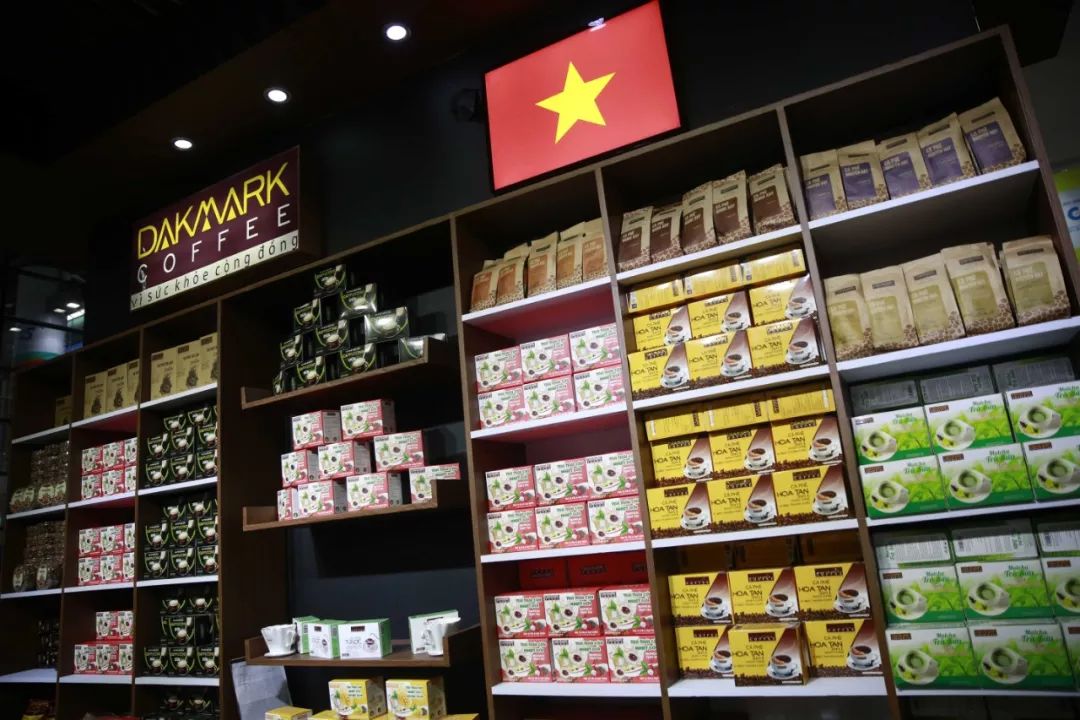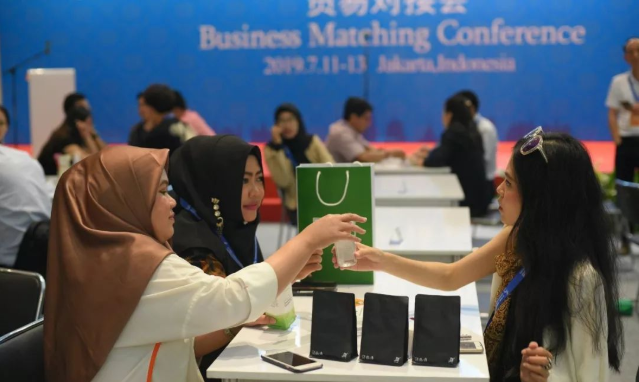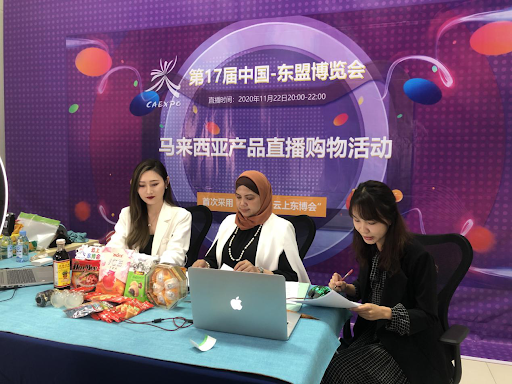

(Written by Guan Qiuyun / Translated by Xie Zongming)For those who live in Southeast Asia, a cup of coffee, instant or fresh-made, not only is a necessity in the breakfast menu but also a symbol of their culture. In the past few years, coffee brands from ASEAN countries have gradually become familiar to Chinese consumers via China-ASEAN Expo (CAEXPO). The Ipoh white coffee from Malaysia, civet coffee from Vietnam, and Kintamani from Indonesia altogether, brew not only the aroma of coffee beans but also the scent of business opportunities in the China-ASEAN coffee industry.

ASEAN coffee warmly welcomed in CAEXPO
On the first day of the 17th CAEXPO, the Indonesian section was swarmed with visitors. “We like Mandheling coffee, especially for its good taste and fair price. Usually, the only access to the products is through overseas agencies. Thanks to the CAEXPO, it’s easier and cheaper to purchase them now,” said Ms. Liu, a coffee fancier who drove all the way from Fangchenggang city to Nanning for the CAEXPO.
Indonesian products, especially coffee, have achieved moderate success with the help of the CAEXPO in the past few years. The Indonesian enterprise Kapal Api Global has attended the CAEXPO for many consecutive years, along with its hit products like instant latte and civet coffee. Its turnover in the 17th CAEXPO has tripled compared to their sales in the last CAEXPO. Another Indonesian coffee brand, Kopi Kenangan, also gained fruitful results in the Expo. Its online and offline sales volume reached RMB 630,000 yuan (about US$ 97,000) and the signed franchise fee was about RMB 1,000,000 yuan (about US$ 150,000).

Since 2004 when Vietnamese coffee first appeared in the CAEXPO, Vietnamese coffee has made its way into the Chinese market. Trung Nguyen G7, the most famous Vietnamese instant coffee in China, has long been the champion in CAEXPO’s coffee sales. Another example of success is Trung Nguyen’s civet coffee, Weasel. When Weasel made its name in CAEXPO, the product was able to enter online supermarkets like Tmall, JD Mall, and Pinduoduo, along with a series of offline stores like Walmart and Yonghui Superstores. According to the statistics in the China Consumer Reports of 2020, on average, every 1 out of 7 Chinese consumers is holding a cup of G7. It is also estimated that the sales of Vietnamese coffee brands are likely to hit 23% by 2023.
“Ice Drip Coffee from the Philippines tastes more than good but is known to few. Therefore, its sales are relatively low. This time, the online marketing exhibition promotes our products and increases the number of orders. Also, We received invitations for cooperation from companies in Hong Kong and Macao.” said a Philippine coffee retailer who has attended the Expo for 4 consecutive years. He said with joy that ever since his promotion in the Online CAEXPO of 2020, his business in China is booming on a year-on-year basis.
With the deepening of China-ASEAN cooperation in the coffee industry, ASEAN coffee is winning Chinese consumers’ hearts.
Good ads for good coffee
To better promote Southeast Asian coffee, the CAEXPO set up the coffee expo to exhibit the ASEAN coffee and coffee culture of ASEAN states as early as 2012. In the 17th CAEXPO, the innovative sellers introduced the “coffee blind boxes”, by which the consumers can get different brands of coffee and taste some surprising flavor that they haven’t thought of trying before. This method helps promote some quality but less-known coffee brands. According to Eastmoney, the sales volume during the coffee expo reached 1.2 tons and are still growing at a speed of 15% per year with the help of various promotion campaigns.
Coffee sellers in the CAEXPO of 2020 embraced livestream promotion. “As you see, we’ve just made a cup of Ah Huat’s Malaysian white coffee. The coffee is at a special discount during the CAEXPO,” said Tia, streamer from Lazada’s service center in Nanning. In the 17th CAEXPO, this Malaysian streamer has introduced the coffee from her home country to China and the world with fluent Chinese, getting 107,000 likes within one hour. Along with the pre-order sales, the turnover of that day reached almost RMB 1,000,000 yuan (about US$ 153,000), thanks to the global streaming.

Brands from other ASEAN countries soon followed up. Franchisees of Mandheling & Brazil blend coffee from Myanmar and drip brewing coffee from Laos also entered the smart e-commerce section in the Online CAEXPO. Chinese consumers have easy access to overseas shops, completing the purchase with only a few taps on the phone.
With the joint promotion of the CAEXPO and China-ASEAN Coffee Industry Cooperation Committee (CACICC), Guangxi and Yunnan are carrying out a series of communications with ASEAN countries in coffee cultivation, brewing technology, and personnel training. Also, the CAEXPO and CACICC are building an Overseas Coffee Cooperative Planting Demonstration Area with Vietnam, Laos, Indonesia, and Cambodia. The two associations are planning to bring forward new kinds of quality coffee, some of which have achieved large-scale planting.
Enhancing industrial distribution to benefit more consumers
Compared to other coffee in the world, Southeast Asian coffee enjoys the fame of rich fragrance and delicate taste. Its unique flavor wins it the favor of many coffee fanciers. The question is, how to utilize the CAEXPO as a platform to enter the Chinese market and allow more Chinese to taste the authentic ASEAN coffee?
Xu Ningning, Executive Director of China-ASEAN Business Council, suggested that there should be more industry procurement matching conferences, more coffee-themed events, and more communicative coffee activity for domestic and foreign coffee fanciers under the CAEXPO Framework, to boost the coffee sales and improve the visitors’ experience. Meanwhile, in China-ASEAN Free Trade Area, China could further open up its coffee market to Southeast Asia and lift some of the tariffs on coffee beans import, which will help lower the cost of ASEAN coffee production in China, benefiting more consumers.
The manager in charge of international marketing of Trung Nguyen Inc. approved the great potential of the Chinese coffee market. To gain more market share, Vietnamese brands would better look for market agents or set up a branch office in China through the CAEXPO. In this way, they can instantly react to the current preference of Chinese consumers and market trend, building their reputation and publicity in China.
“I think the Online CAEXPO is the next platform worth focusing on. Compared to the big enterprises, SMEs like us are the groups that benefit from livestream and e-commerce the most, for the promotion and logistics costs are hugely reduced,” said Chalie Huang. In his opinion, utilizing innovations like Online CAEXPO, cross-border e-commerce and 3D exhibition room will open up a huger foreign market for their brand and products.
It is said that the coming 18th CAEXPO will expand its service to RCEP countries. By then, more Southeast Asian coffee brands would have the opportunity to explore larger regional markets through the CAEXPO. And by adhering to the online + offline pattern, more coffee enterprises would be able to enjoy 24/7 trade service and develop new cooperation channels and business partners. An upgraded CAEXPO is making way for ASEAN coffee to enter the households of Chinese consumers.
Source: China-ASEAN Panorama
桂ICP备14000177号 Copyright@2006-2013 Guangxi China-ASEAN Panorama Magazine Agency Co., Ltd. All Rights Reserved